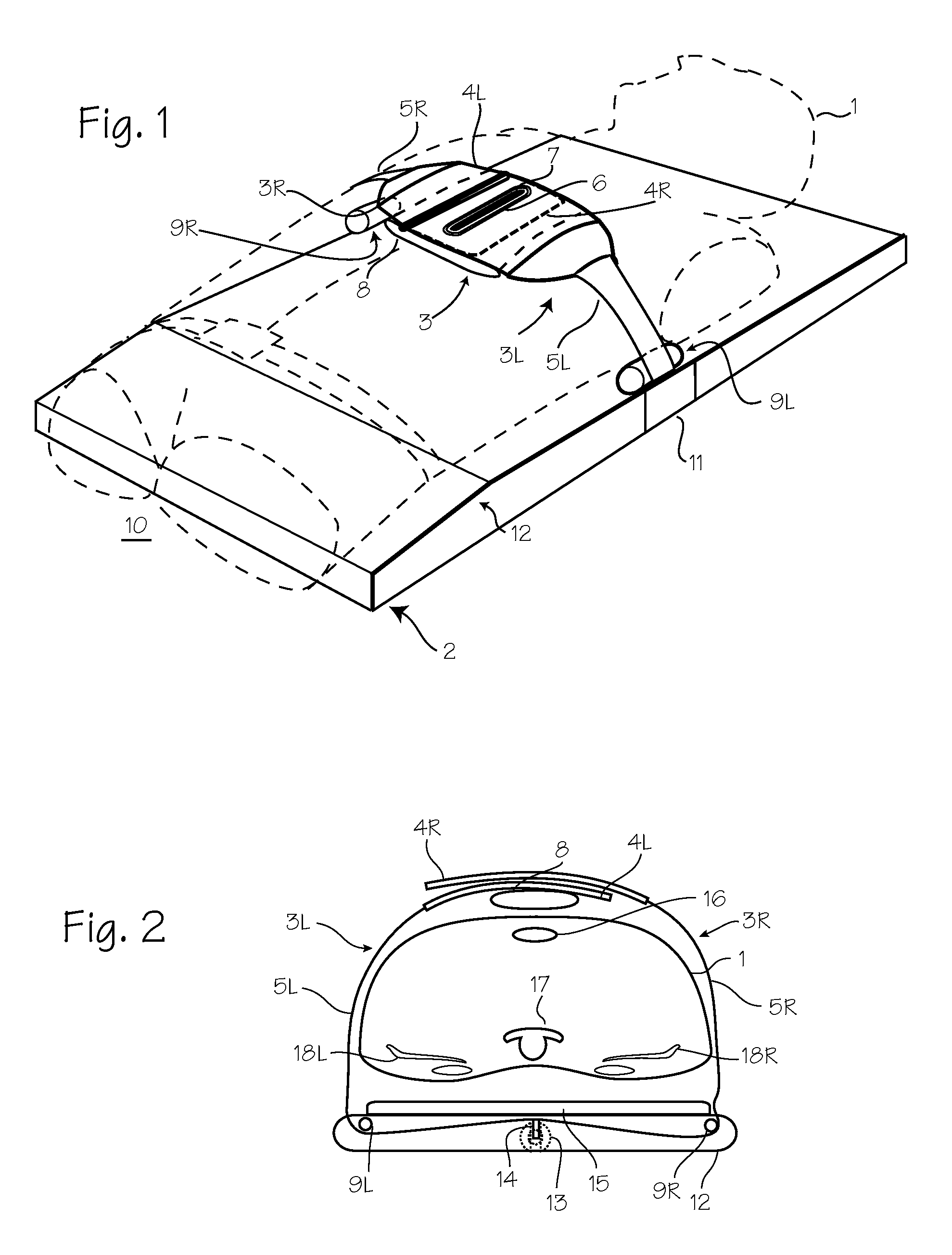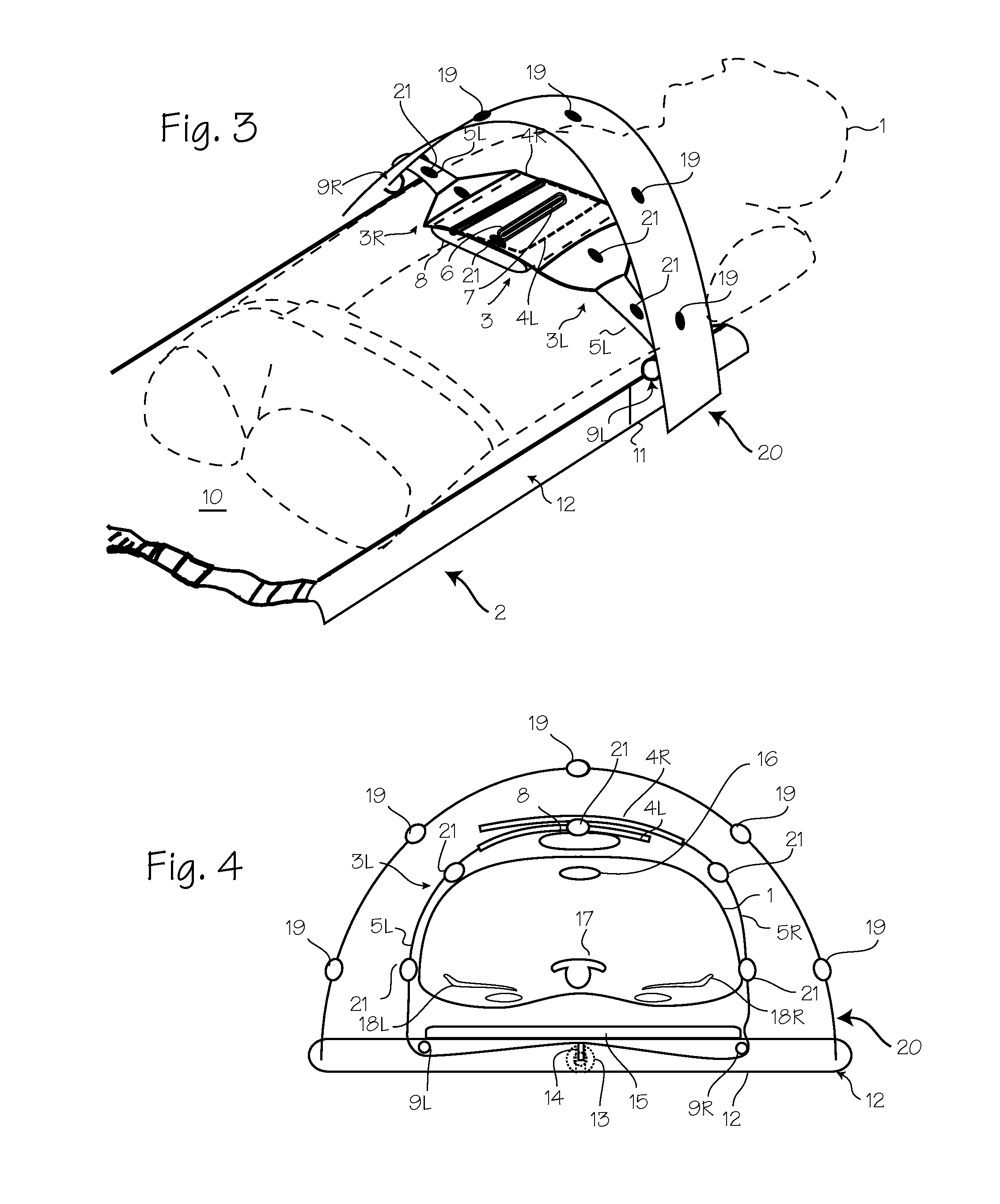Chest Compression Belt with Belt Position Monitoring System
a belt position monitoring and chest compression technology, applied in the field of chest compression devices, can solve the problems of inferior/superior movement of the belt by cpr providers using the device, the inability of experienced paramedics to maintain adequate chest compression for more than a few minutes, and the inability of cpr to sustain or revive patients
- Summary
- Abstract
- Description
- Claims
- Application Information
AI Technical Summary
Benefits of technology
Problems solved by technology
Method used
Image
Examples
Embodiment Construction
[0033]FIGS. 1 and 2 illustrate the chest compression device, similar to the AutoPulse® CPR chest compression device, fitted on a patient 1. A chest compression device 2 applies compressions with the belt 3, which has a right belt portion 3R and a left belt portion 3L, including load distributing panels 4R and 4L designed for placement over the anterior surface of the patient's chest while in use, and tensioning portions which extend from the load distributing portions to a drive spool, shown in the illustration as narrow pull straps 5R and 5L. (The entirety of the compression belt is referred to as a “load distributing band” in the art.) The right belt portion and left belt portion are secured to each other with hook and loop fasteners and aligned with the eyelet 6 and protrusion 7. A bladder 8 is disposed between the belt and the chest of the patient. The narrow pull straps 5R and 5L of the belt are spooled onto a drive spool located within the platform (shown in FIG. 2) to tighten...
PUM
 Login to View More
Login to View More Abstract
Description
Claims
Application Information
 Login to View More
Login to View More - R&D
- Intellectual Property
- Life Sciences
- Materials
- Tech Scout
- Unparalleled Data Quality
- Higher Quality Content
- 60% Fewer Hallucinations
Browse by: Latest US Patents, China's latest patents, Technical Efficacy Thesaurus, Application Domain, Technology Topic, Popular Technical Reports.
© 2025 PatSnap. All rights reserved.Legal|Privacy policy|Modern Slavery Act Transparency Statement|Sitemap|About US| Contact US: help@patsnap.com



